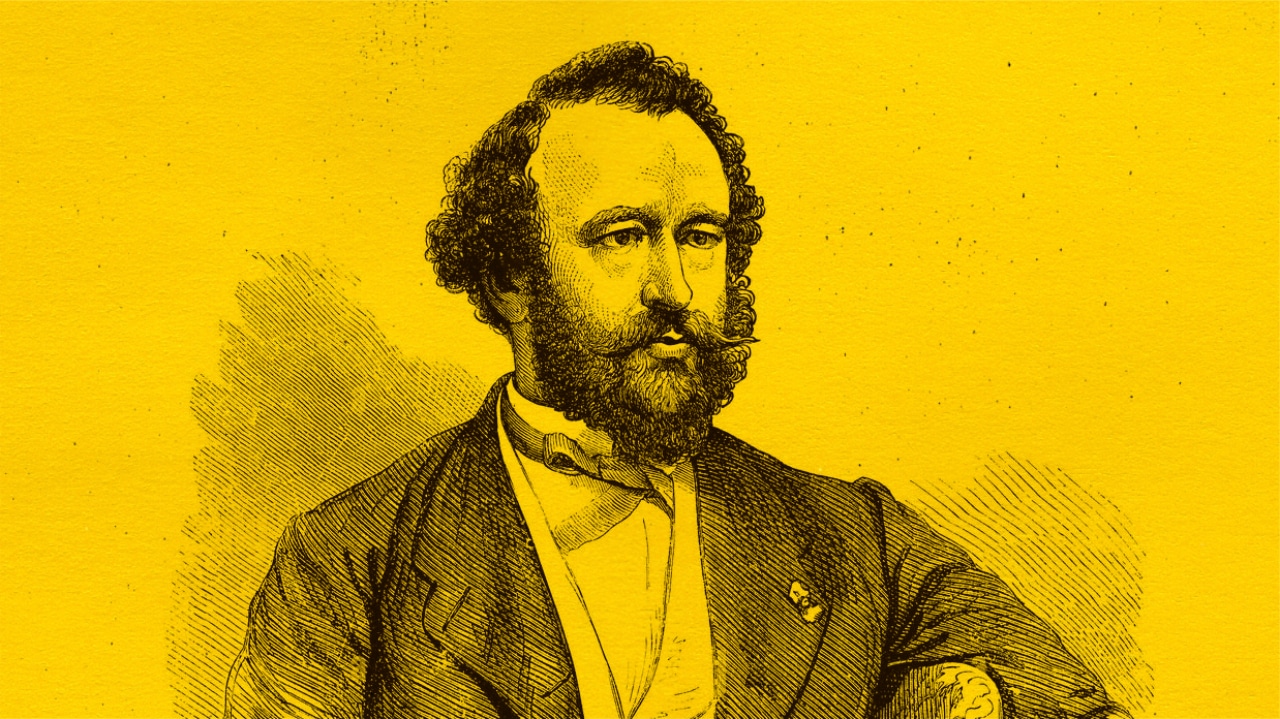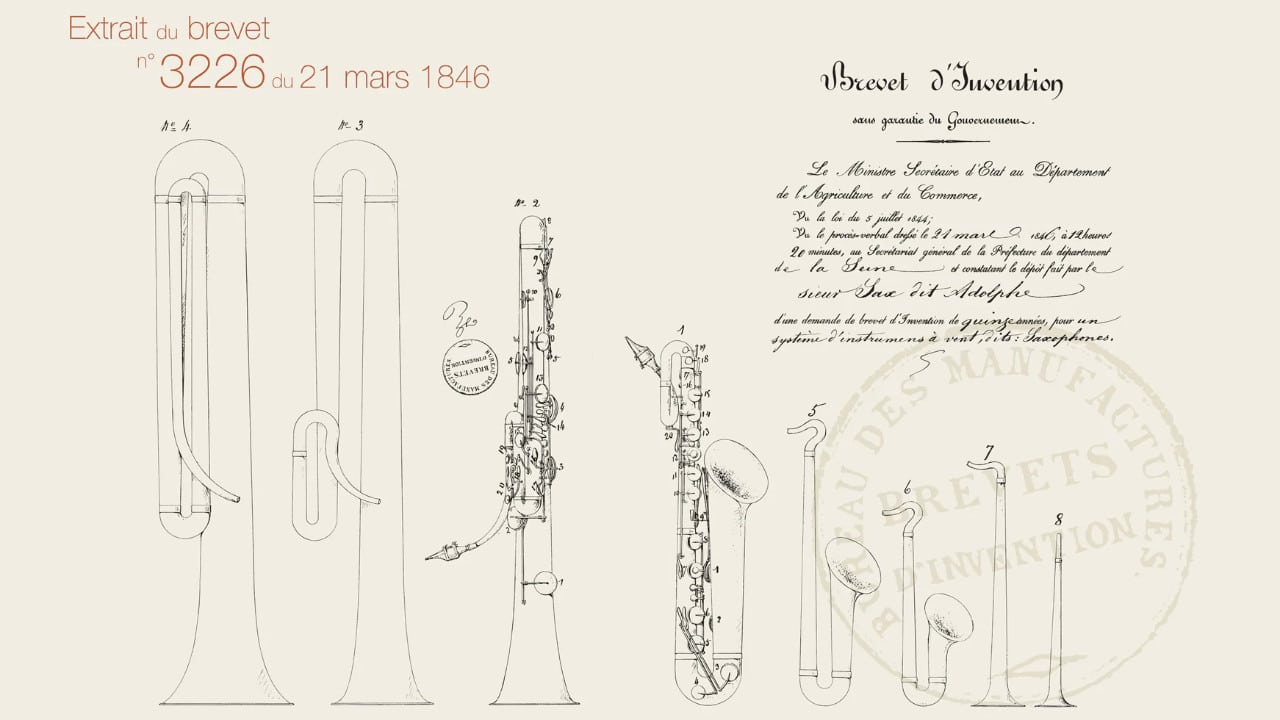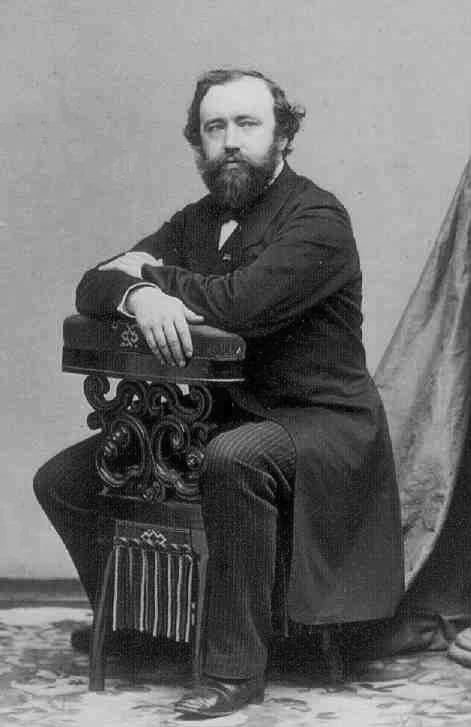
We owe the distinctive sound and innovative design of the saxophone to its creator, Adolphe Sax… but not everyone was a fan when it was unveiled to the world!
Born in Belgium in 1814, Adolphe Sax moved to Paris as a young man in 1842 where he quickly made a name for himself as a prodigy when it came to inventing and improving existing instruments. This saw him make many friends among certain prominent musicians and composers, including noted composer Berlioz who gave his innovative instruments a glowing review in a popular publication:
M. Adolphe Sax of Brussels… is a man of penetrating mind; lucid, tenacious, with a perseverance against all trials, and great skill… He is at the same time a calculator, acoustician, and as necessary also a smelter, turner and engraver. He can think and act. He invents and accomplishes… Composers will be much indebted to M. Sax when his instruments come into general use. May he persevere; he will not lack support from friends of art.
Partially as a result of this article, Sax was invited to perform a concert at the Paris Conservatoire to much fanfare and success. All this publicity soon saw Sax acquiring the funds to setup the Adolphe Sax Musical Instrument Factory.
Unfortunately for Sax, this new-found fame was the start of an issue that would plague him for the rest of his life. His revolutionary instruments threatened to leave other Parisian musical instrument makers in the dust. Sax’s audacious plans didn’t help matters either when he landed a rather lucrative contract with the French Government in 1845, who were keen to revitalise their military bands with new and improved instruments. A centrepiece of this was Sax’s new and extremely innovative ‘saxophone’, which combined major elements of the woodwind families with the brass.
This lead to the combined might of every prominent instrument maker in Paris to level against Sax and literally form an organisation to take him down, named ‘The United Association of Instrument Makers’. His rivals resorted to every underhanded trick in the book to try to ruin him, from frequent slanderous newspaper articles, to countless lawsuits, to attempts to have his work boycotted.

A long running tactic by the association was simply to tie up Sax’s resources, time, and energy in any way possible in court. The first legal action was to challenge Sax’s patent application on the saxophone, initially claiming that the instrument as described in the patent didn’t technically exist. When that failed, they claimed that the instrument was unmusical and that Sax had simply modified designs from other makers. They then presented various other instruments that had preceded it, none of which the court agreed were similar enough to the saxophone to warrant not granting the patent.
Next, they claimed that the exact design had long existed before, made by other manufacturers in other countries and that Sax was falsely claiming it as his own. To prove this, the association produced several literally identical instruments to Sax’s saxophone bearing foreign manufacturing markings and supposedly made years before. The truth was that they had simply purchased saxophones from Sax’s company and sent them to foreign workshops where Sax’s labelling had been removed and replaced with the shop owner’s own. Unfortunately for the United Association of Instrument Makers, this ruse was discovered and they had to come up with a new strategy.
The association then claimed that since Sax had very publicly played the instrument on several occasions, it was no longer eligible for a patent. An infuriated Sax countered by withdrawing his patent application and giving other instrument makers permission to make a saxophone if they had the skill. He gave his rivals a year to do this, in which time nobody was able to successfully replicate the instrument with any quality. Shortly before the year was up, with no challenger apparently capable, he then re-submitted his patent application and this time it was quickly granted in June 1846.

Apparently not content with just trying to ruin his life and business, at one point Sax’s workshop mysteriously caught fire and in another an unknown assassin fired a pistol at one of Sax’s assistants, thinking it was Sax, with it being rumoured that the United Association of Instrument Makers was behind both of these things.
To make things worse, in the aftermath of the French revolution and with many of Sax’s high placed friends ousted, the United Association of Instrument Makers were able to simultaneously petition to have Sax’s contract with the military and many of his instrument patents revoked by 1849. They also attempted to have his patent for the saxophone squashed, but were unsuccessful. Not one to take this sitting down, Sax appealed and after a five year legal battle, the Imperial Court finally sided with Sax and reinstated his patents.
During this time, Sax found himself financially ruined, filed for bankruptcy, closed down his factory, and fled to London. However, Sax wasn’t about to quit and by continuing to work at his craft, in 1854 he found himself back on top as appointed Musical Instrument Maker to the Household Troops of Emperor Napoleon III, which helped Sax emerge from bankruptcy and re-open his factory.
Sax continued to make and develop musical instruments, as well as fighting countless legal battles, with the United Association of Instrument Makers attempting to thwart him in any way they could, while simultaneously the musical instrument makers behind it profited from Sax’s designs as his patents expired.
Adolphe Sax died at the age of 79 in 1894 and was buried in the Montmartre Cemetery in Paris.
Information referenced from: The Surprisingly Badass Life of the Inventor of the Saxophone, Adolphe Sax
You may also enjoy reading: A Visit To The Musical Instruments Museum, Belgium





Leave a Comment